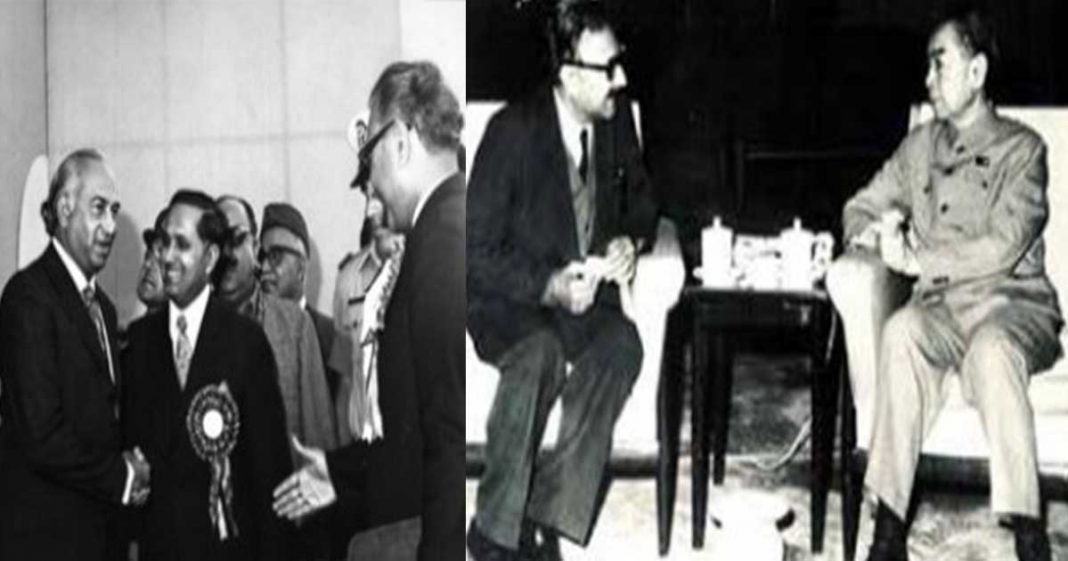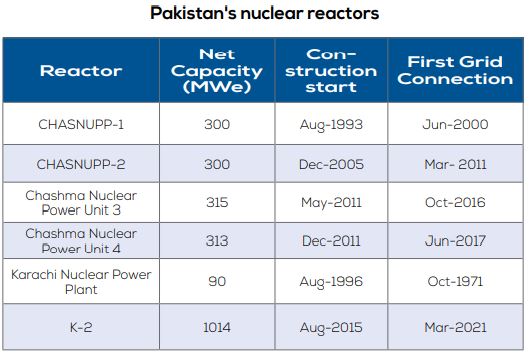Nuclear Power Plants:
When a friend came to Pakistan’s rescue
By
Magazine Desk
21 May 2021
Pakistan has around 2350 MWe operating nuclear capacity and 1100 MWe is underconstruction; most of it was developed with Chinese help. Nuclear energy power generation contributes about 7 percent to Pakistan's power generation.
China-Pak cooperation on this front started in the 1980s with the Chashma project and continues to date with the recent K2 and K3 plants in Karachi.

Pakistan’s nuclear program started in the 1950s under the US Atoms for Peace program as part of its cold war containment strategy. Countries including Pakistan, Israel, India, and Iran, amongst others, were encouraged to use nuclear energy, not only because it was cheap but also more environmentally friendly and because the US wished to demonstrate its peaceful usage to the world.
Pakistan’s first nuclear reactor, 137 MWe
KANUPP 1 (K1) plant, was built in 1965 in Karachi by General Electric Canada, a Canadian company that also provided it nuclear fuel and technical support. However, by the early 1970s, Pakistan found itself in a dire situation as its energy requirements increased exponentially.
In order to continue growing, it was in desperate need of a cheap and reliable method to generate power. The Chashma nuclear power plant [
CHASNUPP] project located in central Punjab was a brainchild of PM Zulfikar Bhutto.
Planning and designing for it had started full throttle by 1973, by the Pakistan Atomic Energy Commission under its then-chairman Munir Ahmad Khan. Bhutto started negotiations with France over potential funding, which he secured.
However, India’s ironically named ‘Smiling Buddha’ nuclear explosions in 1974 created controversy over supplies of commercial nuclear plants, and by 1976 France started backtracking from its commitment to export the reprocessing plant to Pakistan.
Note... K -1 construction started in 1967.
China provided majority of financing as 20 year low interest loans. China will also provide fuel for reactors lifetime for these projects. All the information comes from public sources.
Under pressure from the French, Bhutto agreed to sign the safeguard agreement that brought the plant under the International Atomic Energy Agency’s supervision. Despite this, by 1978, France halted its funding for the Chashma project and reneged on its contract.
By 1976, the Canadians also stopped providing nuclear fuel and technical support to Karachi’s K1 plant, under US pressure, after Pakistan refused to sign the 1970 Nuclear Non- Proliferation Treaty (NPT). This later became a blessing in disguise as the Pakistan Atomic Energy Commission upped its game, researched and developed local indigenous fuel and parts.
Later on, Pakistan and China signed an agreement on the peaceful usage of commercial nuclear power technology, which help to initiate the cooperation on Chashma reactor with China National Nuclear Corporation in early 1990s.
An agreement was reached in late 1989 with China National Nuclear Corporation (CNNC) for the supply of the Chashma reactor, with the final contract signed in Beijing on 31 December 1991. In 2000, the Chashma Nuclear Power Plant became operational when it joined the nation’s grid system, with CNNC overseeing the grid connections of the power plant.
In 2004, CNNC was awarded the contract for building a second unit based on the first reactor, followed by contracting for two more reactors in 2011. In March 2013, Pakistan and China agreed to construct a fifth unit at the Chashma nuclear power plant site, eventually signing an agreement on 27 November 2017.
Recently, China National Nuclear Corporation (CNNC) is also helping to build the Kanupp-2 and Kanupp-3 plants in Karachi, which will have around 1100 MWe each. The construction of the K2 and K3 reactor units started in August 2015 and May 2016, with the start of commercial operations scheduled for 2021 and 2022, respectively.
These reactors are expected to have a design life of 60 years and will account for around 10% of the country’s total generation capacity. Almost 80 percent of the project cost is being covered as a loan from China’s Exim bank.








 .
.